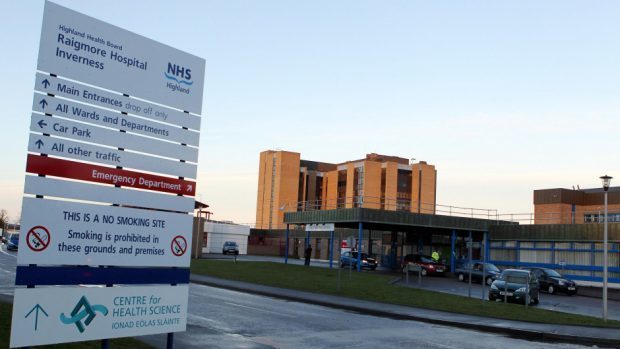NHS Highland spent almost £8.8million on bank and agency nurses in the last year – a 44% increase in five years – highlighting a “deepening crisis” in recruitment, a north MSP has claimed.
Highlands and Islands Conservative politician Edward Mountain has criticised the local health authority over the increased spend, revealed in figures released by ISD Scotland.
They also show NHS Highland has the second largest difference across Scotland for its expected and actual nursing complement, currently operating at 85.3% of its total staffing capacity of nursing and midwifery posts filled.
Mr Mountain said: “These new figures highlight the deepening recruitment crisis in NHS Highland.
“NHS Highland is becoming more and more dependent on locums with staff shortages in nursing, radiology and ophthalmology.
“Underfunding from the SNP Government and mismanagement from NHS Highland has created this crisis. Patients and families are worried that their health services will not be sufficiently staffed if this crisis continues.”
NHS Scotland nursing and midwifery staff over the age of 50 has increased to 38.2% from 26% in 2008.
Heidi May, board nurse director for NHS Highland, said: “NHS Highland like all other Boards is now experiencing increasing challenges due to having an older workforce – with increased numbers of staff retiring and also a decreasing pool of people of a working age to recruit from bank staff are important to us as they enable us to staff our services in a sustainable way.
“We have a unified Staff Bank that co-ordinates the supply of bank and agency staff and also ensures that the quality of staff we recruit is of the highest calibre.
“NHS Highland is fortunate in that staff we recruit to the bank are largely drawn from our existing staff and this too enables us to sustain high quality care for patients.
“Sustaining the current staffing model will become more difficult over time and local managers and clinical leaders are focusing on the redesign of services and training and development to ensure sustainability into the future.”
NHS Highland have moved to provide local midwifery training at the University of the Highlands and Islands (UHI) in Inverness.
The spokeswoman for NHS Highland added: “By making training more easily accessible for local people we are anticipating greater numbers of staff will undertake training and so will address in the medium to longer term the current shortages of midwives.”
NHS Highland workforce increases to high level
Health Secretary Shona Robison said: “NHS Highland’s workforce has increased by over 22% under this government to historically high levels, including over 80 more consultants and over 110 more allied health professionals.
“To help meet the demands the NHS faces, we are putting record investment into our health service and legislating to ensure we have the right staff with the right skills in the right place.
“Spending on nurse agency staff fell by 3.6% over the last year in Scotland, and we have been clear with Boards that they should only use agency as a last resort when temporary staff are required.
“NHS Improvement reported that the latest nursing vacancy levels in England stand at 10.2%, while Scotland’s nursing and midwifery vacancy rate is 4.5%.
“We are continuing to drive down the use of agencies and reducing vacancy rates will be supported further by our new safe staffing legislation as we work with Boards to support their efforts in staff recruitment.”










